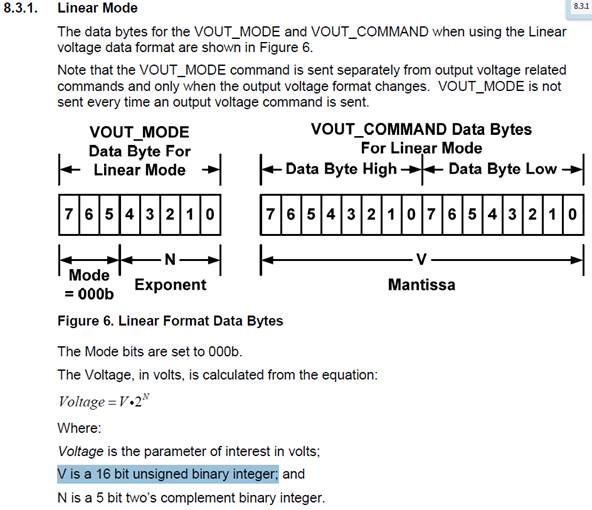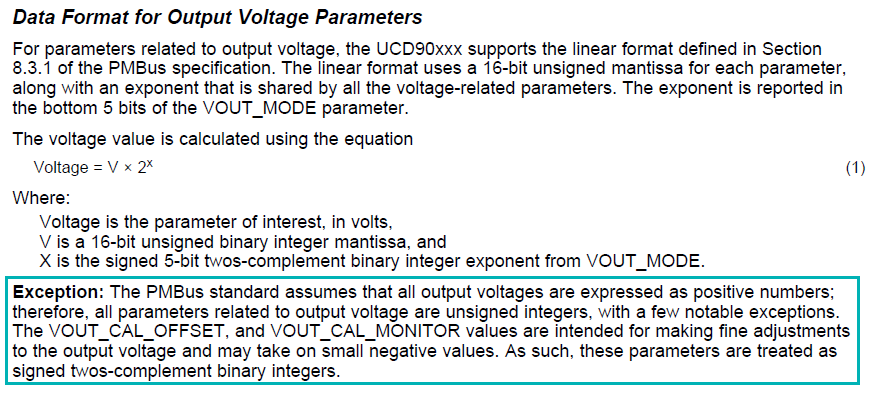Team,
My customer has the following question:
I’m getting confused regarding the data format for voltage related parameters of the UCD9090.
The PMBUS protocol states a 5-bit 2’s complement exponent and 16-bit unsigned mantissa:
My understanding is that the Exponent sets the LSB size and the Mantissa is multiplied by the LSB size:
For example if the exponent was (-13), the LSB size would be 2^(-13) = 122uV.
3.3V would be 122uV x 27,049 = 3.29998V
The largest 16-bit unsigned number is 2^16 – 1 = 65,535.
With this, the largest voltage that could be expressed with an exponent of -13 would be 65,535 x 122uV = 7.995V.
I don’t understand why in the Fusion Digital Power Designer Software with an exponent of -13, the maximum voltage that can be expressed is 4.0V:
If the 16-bit Mantissa was actually a 2’s complement signed number, that would explain the issue. The largest 2’s complement signed number is 2^15 – 1 = 32,767.
122uV x 32,767 = 3.997V
Can you provide feedback as to whether or not the voltage related parameters are actually expressed as signed 2’s complement for the UCD9090? If they are indeed unsigned 16-bit numbers, how come the maximum with a -13 exponent is 4.0V?
Thanks,
Aaron




